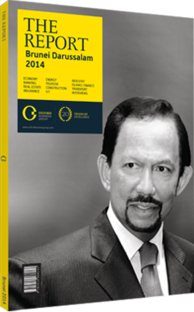Sub-regional alliance to enhance trade and build better linkages
While trade liberalisation through ASEAN will open up opportunities for Brunei Darussalam, the Sultanate may have a larger immediate impact within the smaller sub-region of Brunei Darussalam-Indonesia-Malaysia-Philippines-East ASEAN Growth Area (BIMP-EAGA). Established in 1994 to address the socioeconomic progress of less developed, marginalised and far-flung areas and to narrow the development gaps across and within the sub-region, the cooperative includes the relatively wealthy Sultanate with some of the poorest regions of the other respective ASEAN countries. BIMPEAGA also includes nine provinces in Kalimantan and Sulawesi, the island chain of Maluku, and Papua ( Indonesia); the Federal States of Sabah and Sarawak and the Federal Territory of Labuan (Malaysia); and the island of Mindanao (26 provinces) and the island province of Palawan (Philippines). The overarching goal of the partnership is to wean members off their dependency on natural resource extraction by developing higher-order processing and non-resource-based activities. According to the Implementation Blueprint 2012-16, the four main development thrusts are enhancing connectivity within BIMP-EAGA as well as with other outside regions, establishing BIMP-EAGA as the food basket for ASEAN and the rest of Asia, promoting BIMP-EAGA as a premier regional tourism destination and ensuring the sustainable management of the environment.
Trade
Liberalised trade policies and increased linkages between the countries are beginning to pay off. The trade value of BIMP-EAGA grew by an impressive 70% from $100bn in 2009 to $170bn in 2011 according to a joint statement released in April 2013 at the ninth BIMP-EAGA Summit held in Brunei Darussalam. Intra-EAGA trade accounted for nearly 25% of the total EAGA trade over the same period while foreign direct investment in BIMP-EAGA member countries increased by 129% from $24bn in 2009 to $55bn in 2011.
The key areas of the blueprint most relevant to Brunei Darussalam are connectivity, both through physical infrastructure links (see analysis) and commercially, and to a lesser extent the tourism sector. The Sultanate remains far and away the standard bearer of the group in terms of sustainable management of the environment with the majority of its forests shielded from development, although this same stewardship also limits its contribution to food production which is limited by law to a maximum of 1% its landmass. In spite of these restrictions, the Sultanate has embarked on an ambitious agricultural overhaul in recent years to reduce its dependence on imports by boosting yields.
Taking The Lead
As the most developed member of this alliance, Brunei Darussalam is looking to take a central role among BIMP-EAGA’s smaller regional capitals such as Davao, Kota Kinabalu and Kuching. Although the Sultanate possesses nowhere near the amount of natural resources of its neighbours, its stable business environment, plentiful and inexpensive energy supply along with substantial and ongoing investments in its transportation infrastructure leave it well placed as a processing and transportation hub. A major upgrade of the country’s primary sea link at Muara Port to begin by the end of 2014 is expected to further its aspirations to become a shipping hub within BIMP-EAGA. The government hopes to develop the deepwater port into a feeder for regional traffic by capitalising on liberalised intra-region trade barriers, synchronised Customs, immigration, quarantine and security procedures and new, efficient road links to Sarawak and Sabah. Longer-term ambitions include expanding from just transportation to manufacturing and processing operations set up in industrial zones and fuelled by raw materials from neighbouring countries.
Brunei Darussalam is also situated within the West Borneo Economic Corridor (WBEC) which links Borneo to include the north-western parts of Kalimantan, all of Sarawak and most of Sabah as well as offshore territory. Containing three of the four major oil and gas production and export concentrations within the sub-region, WBEC acts as the EAGA energy corridor and is a significant exporter of forestry products.
You have reached the limit of premium articles you can view for free.
Choose from the options below to purchase print or digital editions of our Reports. You can also purchase a website subscription giving you unlimited access to all of our Reports online for 12 months.
If you have already purchased this Report or have a website subscription, please login to continue.

